The functionality of Salesforce is currently being upgraded, making human work simple and secure. As part of this, understanding the basics of Field Service Lightning and setup has become essential. Applications and packages are also getting updated versions that make users feel more comfortable.
One such advancement is Field Service Lightning (FSL), and understanding the basics of Field Service Lightning and setup is essential to leverage its full potential.
Salesforce Field Service is another name for Field Service Lightning. It is a Salesforce product that creates a unified platform for connecting customers, workers, and products.
It assists agents and dispatchers in carefully planning service appointments based on the expertise and geographic location of the service resource.
Using FSL, service appointments are wisely scheduled for service resources based on their expertise, primary and secondary territory, and availability.
When appointments are assigned, technicians receive the details on their FSL Mobile app, which is available for free in online stores (e.g., Google Play Store).
After completing a job, technicians update the appointment or job status as “dispatched.” This update is automatically reflected in the Dispatcher Console.
The Dispatcher Console works like a report of all appointments. It includes filters that help dispatchers update the job status for multiple records at once.
It also allows viewing the customer’s location and the technician’s location, helping estimate the current position and expected arrival time.
Four types of players have a vital role in this process.
- Administrator
- Agents
- Dispatchers
- Technicians
Administrator
Who integrate the Field Service Lightning in Salesforce as per their business needs and also configure objects, fields, tabs, application, and permission to the different users.
Agents
Who handle the cases (created by them or inbound cases) and create the work orders after the case is created.
Dispatcher
Who schedules and manages the service appointments for the technicians based on their skills and territory which is already stored with their details.
Technicians
Who are directly related to the customer. After the work is completed, they update the progress via mobile. Technicians mostly use the FSL mobile app to update their job.
Following are some key points to remember :
Service Resources – End workers who reached the customer at the end.
Service Territories – Geographic regions of the Service resources are split into the primary and secondary territories of them to help to know their priority.
Service Appointment – Managing the appointments.
Operating hours – Working time of the Service Resources.
Skills & Work Type – Includes the resources skills and work types to help in work assigning and scheduling.
Work orders – This is managed by agents that maintain the customer’s requests.
Product requests – Having details about which work order needs which product. It is defined by the agents or dispatchers related to the work type.
Steps to Get Started: Basics of Field Service Lightning and Setup
1. Goto Quick Find —> Field Service Setting. Enable Field Service.
2. Check the following checkboxes :
Under Notification – Enable notification.
Under Sharing –
i. Share dispatched service appointments with their assigned resources.
ii. Share service appointments’ parent work orders with their assigned resources.
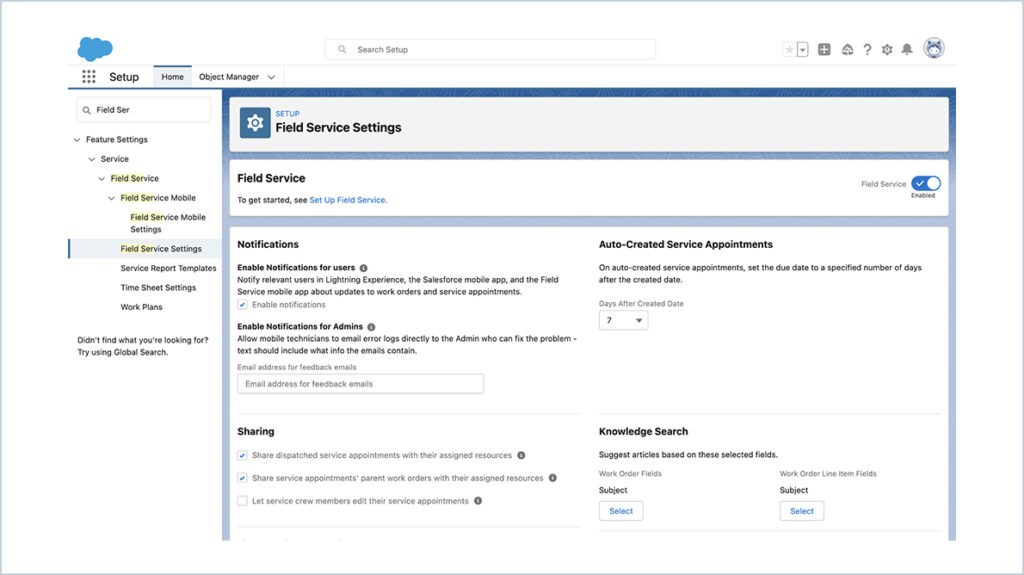
3. Goto https://fsl.secure.force.com/install and install the package by clicking the Install in Production / Install in Sandbox. It took some time to install after signed in.
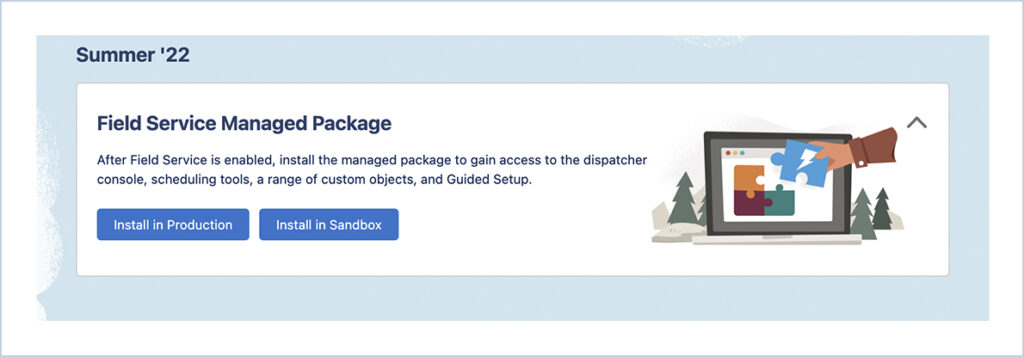
4. After installing the package Goto App Launcher —> Field Service Admin App —> Field Service Settings tab —> Permission Sets. Click all “Create Permission” options.
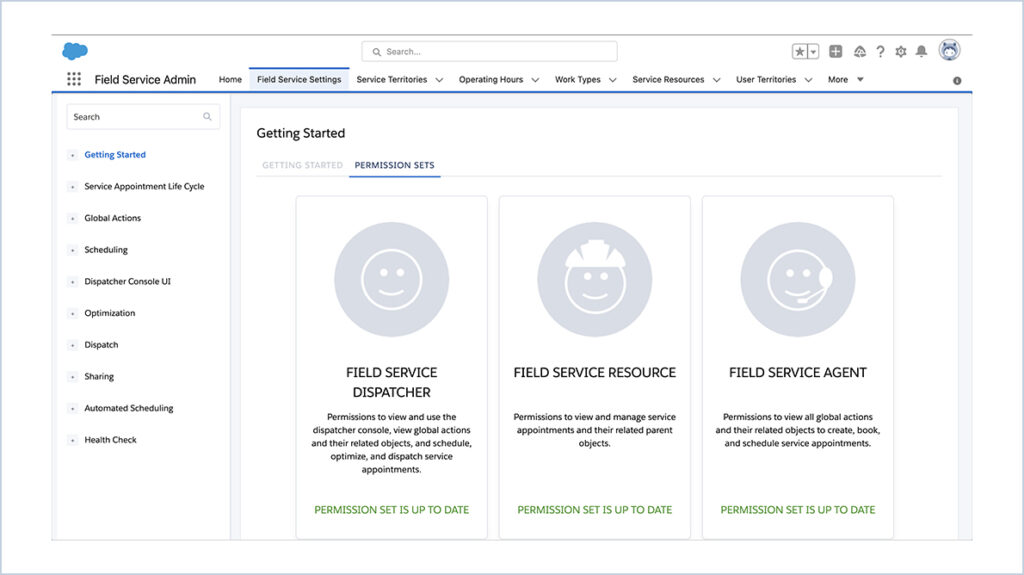
5. Goto Quick Find —> Users —> Click the User Name —> Permission Set Assignments —> Edit Assignments — > Enable the FSL Permission Sets to the user.
6. Goto Quick Find —> Data Integration Rules —> Check the Bypass triggers option is unchecked in the Field Service-related records.
7. Goto —> Feed Tracking —> Select Service appointments Object —> Check the Enable Feed Tracking & Status field —> Save.
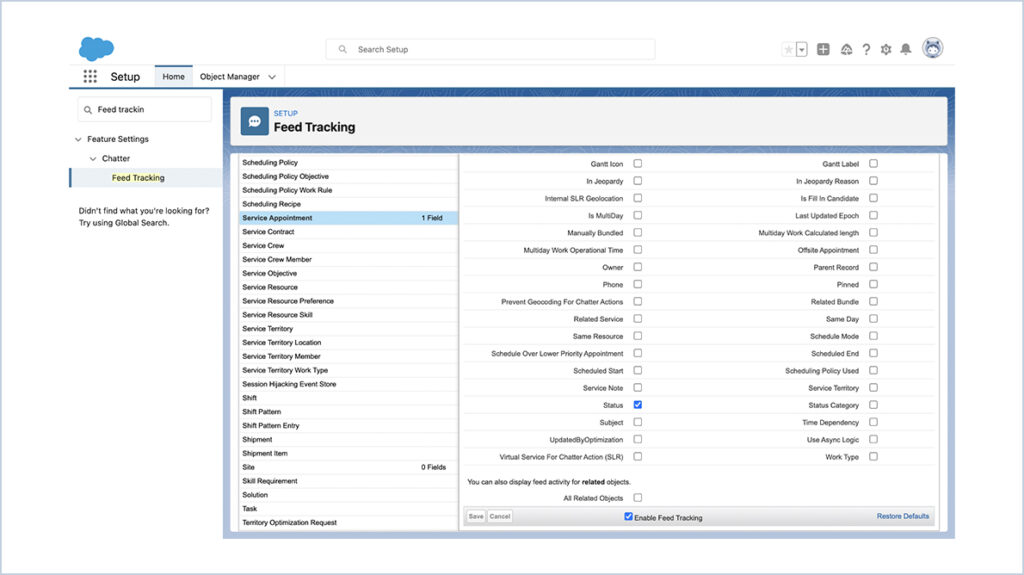
8. Add the needed related list in the layout of the Service Appointments, Service Territories, Case, Work order, Skills, and Service resources.
Some of the Licenses and their uses:
Field Service Dispatcher License – Access to the dispatcher console
Field Service Scheduling License – Access to dispatcher console Gantt, scheduling, and optimization.
Field Service Mobile License – Access to Mobile Field Service Application to the Technicians.
Field Service Community Dispatcher License – Access to the dispatcher console, global actions, and dispatch service appointments.
Profile needed Licenses :
Field Service Admin – FSL Admin Permissions & Field Service Admin License.
Field Service Agent – FSL Agent Permissions & Field Service Agent License
Field Service Resource – Field Service Mobile License, Field Service Scheduling License & FSL Resource Permissions.
Field Service Dispatcher – Field Service Dispatcher License & FSL Dispatcher Permissions.
Three important components in FSL:
1. Core Field Service Lightning:
- Set operating hours, skills, Service appointments, Service
- resources, and related records.
- Enable Mobile access to dispatchers.
- Generate reports and store the data to analyze the field data.
- Track all works and monitor them in the dispatcher console.
2. FSL Package:
- Integrate Salesforce with Workforce and maintain scheduling policies, global actions, and optimization rules with the administration. This helps the admins to schedule the appointment to the technicians.
3. FSL Mobile App:
- Check assigned service appointments.
- Update the status of the appointments.
- Create Event, Task, Contact, Opportunity, Case, and Lead.
- Check the customer location in Map.
- Stay connected with the Dispatcher and admin via chatter.
- Generate service report (PDF) after getting customer’s digital signature.
MOBILE VIEW
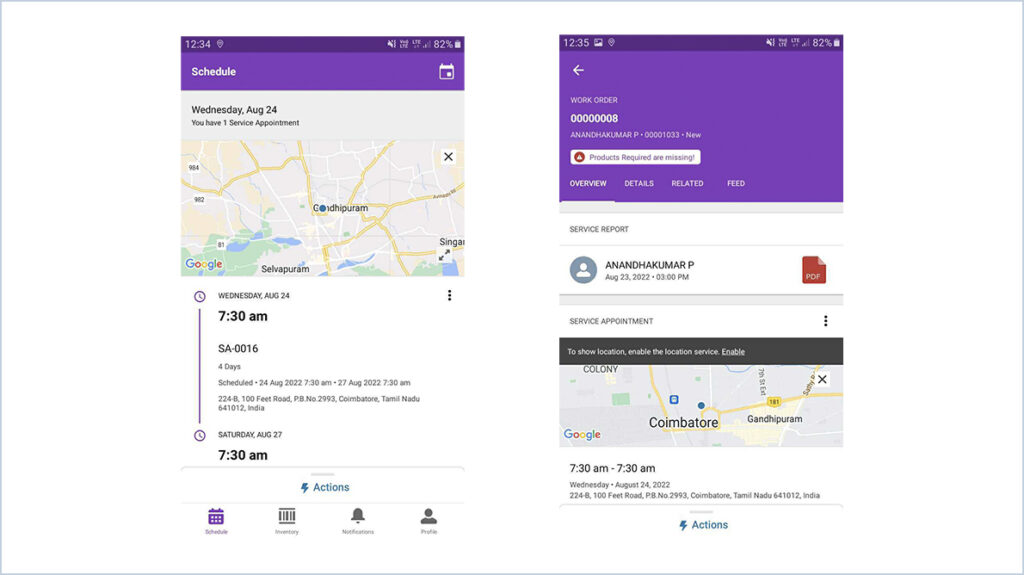
We are Inno Valley Works, We are a passionate team of developers, best thinkers and consultants who can solve anything and everything.
With our highly engaging team, you can easily bring the vision to all your business ventures come true.
We have team, put your problem, get your solution
🎥 Check Out Our YouTube Channel
Explore helpful tutorials, product updates, and feature walkthroughs from the team at Innovalley Works.
👉 Visit Our Channel


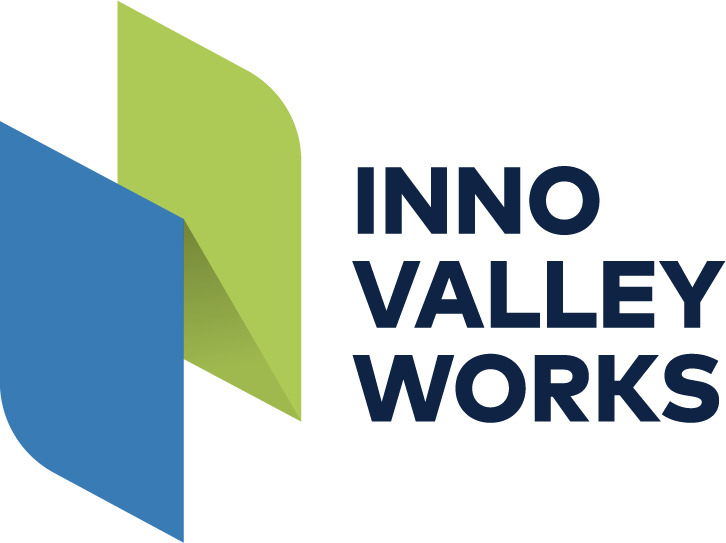

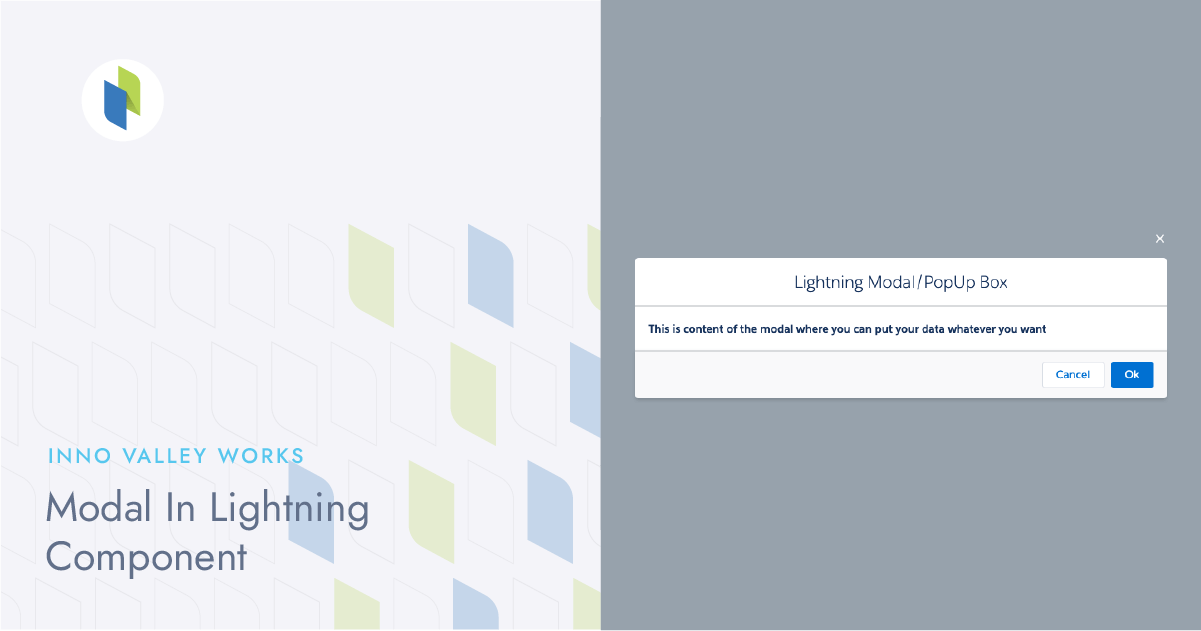
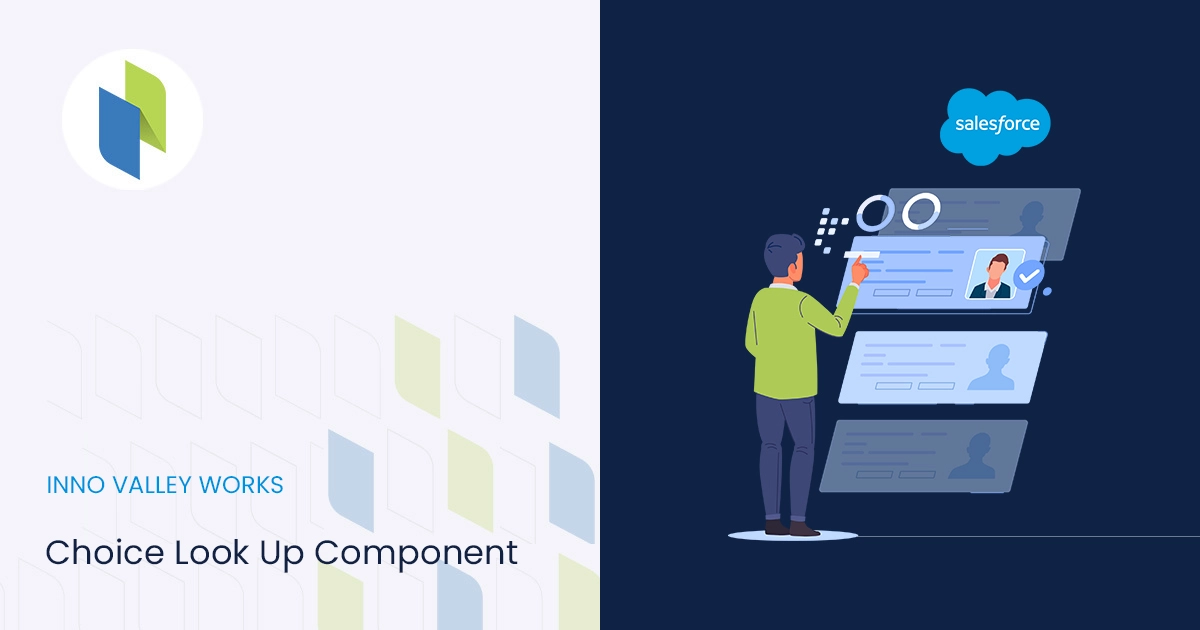
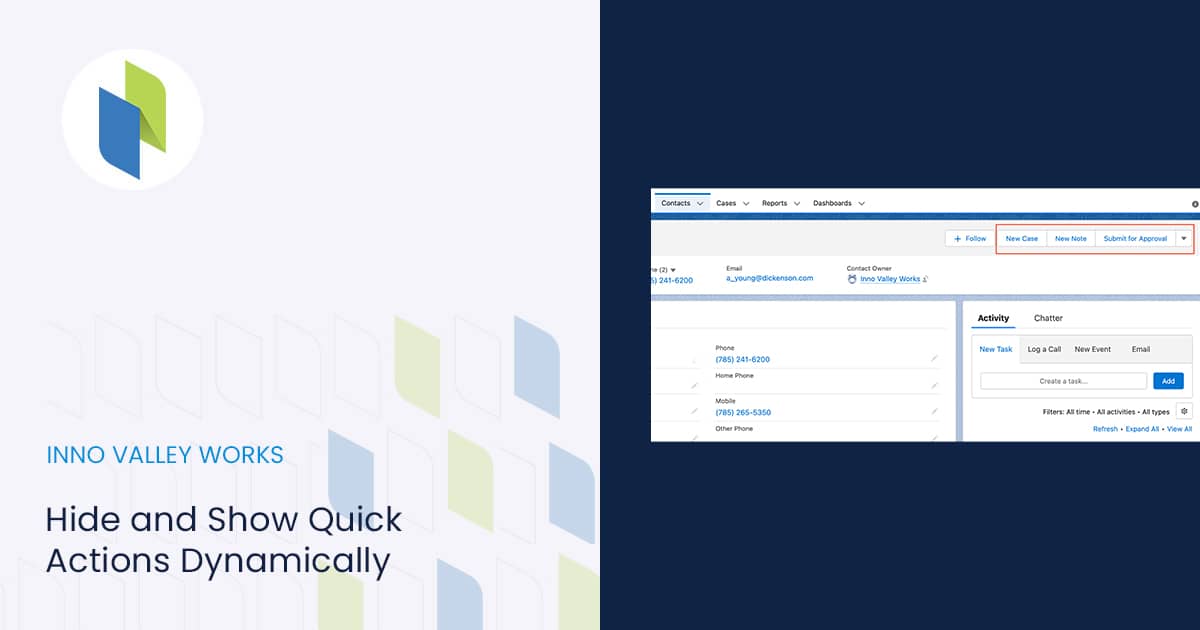
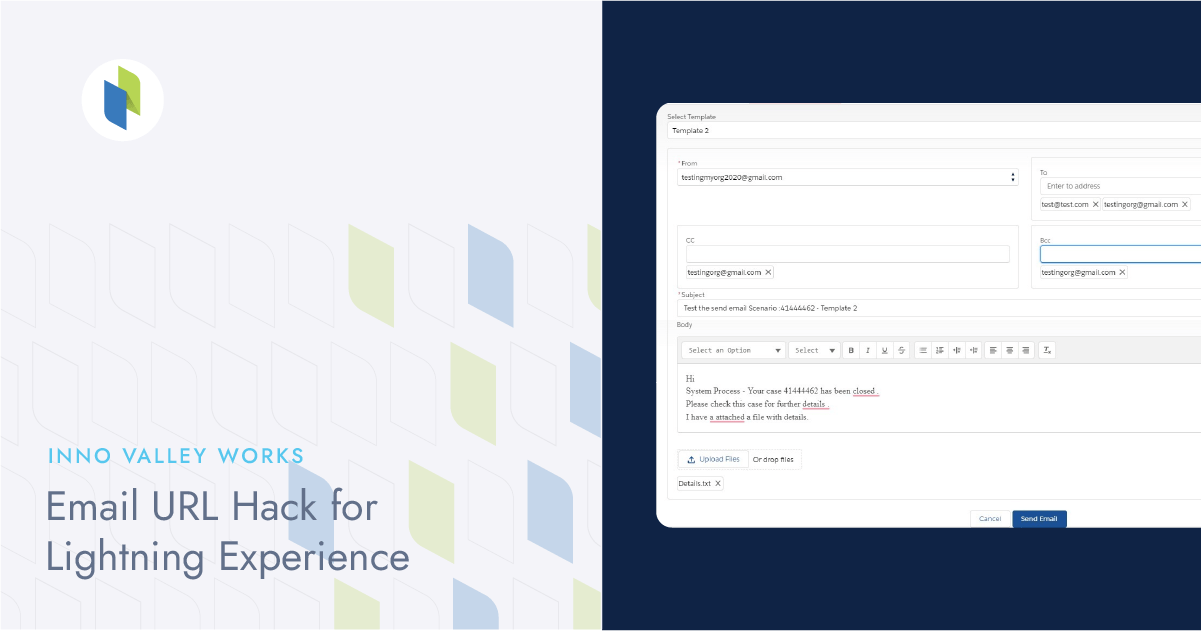
 .
.